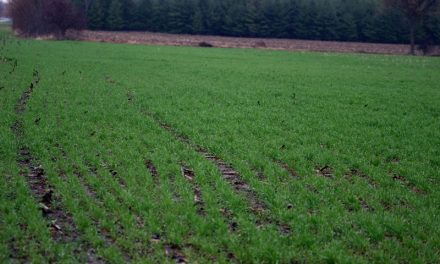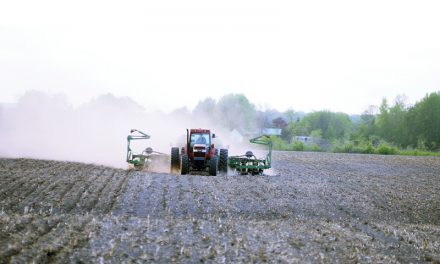By Jakob Vogel agr.
AgriNews Contributor
Livestock agriculture accounts for roughly eight per cent of global methane emissions; this phrase, and these statistics are shared throughout various groups, and the attack on modern livestock producers is real. With that, the feeling of overwhelming defeat pops up quite quickly. With the latest announcement from Dairy Farmers of Canada aiming for carbon neutrality by 2050, many producers are feeling concern and additional pressure because few, if any recommendations or solutions have been suggested along with this set goal.
Many producers have already claimed that their farms are already carbon neutral. While, the theory makes sense that many dairy farmers should certainly be close to carbon neutral, what with the recycling of manure solids and incorporations of perennial forage production, a recent study conducted in Quebec, determined that we as an industry, are further from being carbon neutral than we originally hoped for; this is the bad news. However, there are still significant opportunities to thrive to this new target of carbon neutrality for the betterment of the environment and global sustainability. When we look at the economics related to the various methods and protocols that support this target – we find ourselves with a true win-win situation.
Although there are many ways to reduce our carbon footprint and improve methane emissions, the conclusion of several studies suggests that there are three main areas of improvement that directly impact dairy producers.
The first part to understand is that livestock production mediates a part of its methane (carbon) emissions because of the nutrient dense foods that are produced. So, the first target to reduce methane emission is correctly managing replacement animals.
Because replacement animals are not producing milk, their net emission will always be positive. So, by having too many replacement animals we impact the overall emission status of the herd. Over the past couple of years, the number of replacement animals has been a hot topic for many industry stakeholders. The reality is, that each farm’s requirement for replacement animals will be different but can easily be calculated.
The second aspect relating to heifers is improving their age at first calving. Knowing that the average age at first calving in Ontario is still over 25 months, there is significant room for improvement. By decreasing the age of the first calving, we can decrease net methane emissions (per L of milk produced) by 3 per cent. Additionally, to this, allowing these animals to begin generating profits sooner.
Increasing milk production of the herd by 3 L of milk will have a similar result (reduced methane emissions by 3 per cent) as reducing the age at first calving. The economic impact of this opportunity can easily be calculated; if we assume a 100-cow dairy, this increase of milk assuming a $85/hL would yield an additional $255 per day. That being said, based on the status of the herds’ quota holding and quota production, this increase in production could allow the herd to reduce the milking herd by approximately 9 lactating animals. This improved efficiency could ultimately increase the financial fitness of the business. Understanding that the average feed cost of the modern cow varies between 10-13 dollars per day, could reduce feed costs by $90 – $117 per day. Of course, the potential gain cannot be these two values together, but can be calculated.
Based on this series of studies measuring methane emissions, the biggest factor manageable on farm is reducing involuntary culling of lactating animals. By decreasing the culling rate of the herd by 5 per cent, dairy producers are able to decrease net methane emissions by 12 per cent!
Now, although this reduction in culling rate seems to have the largest impact, understanding the reason for these culling rates becomes the most important factor when targeting the 5 per cent reduction. For example, knowing that the majority of cows culled on Ontario dairies happens in the first 100 days in milk, it needs to be understood if the animals are being culled for milk production (sold to another producer) or sold because of metabolic disease. These diseases can be related to comfort, management, or nutrition which can be measured, and targets with the management team at the farm level can be achieved.
Ultimately, the costs associated with a milk fever, retained placenta, ketosis or other metabolic diseases are measurable and slightly variable depending on herd performance and associated vet costs, however – if producers are able to decrease their incidence of metabolic disease, increasing peak milk and decreasing the carbon footprint of milk, we as an industry will only be better positioned when facing consumers.













